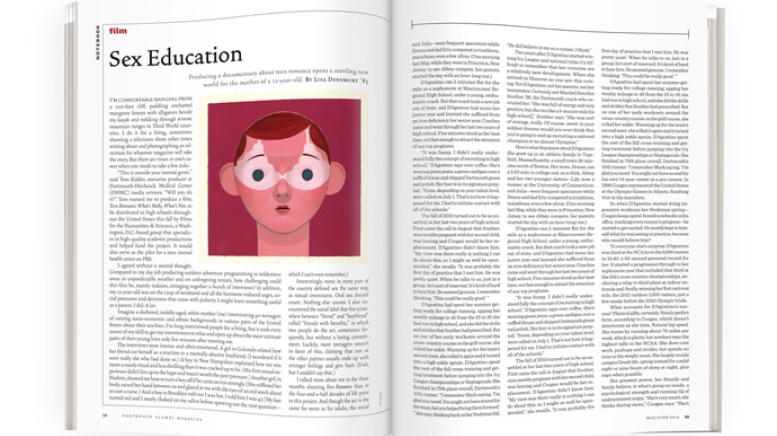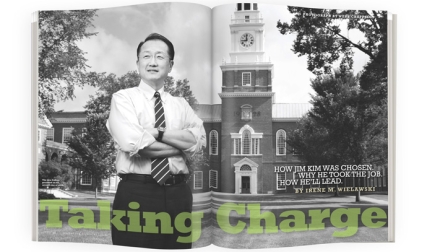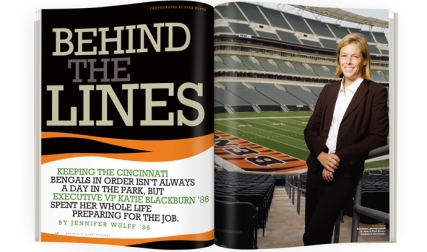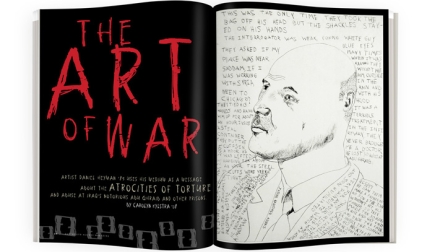I’m comfortable hanging from a 100-foot cliff, paddling uncharted mangrove forests with alligators beside my kayak and trekking through remote mountain ranges in Third World countries. I do it for a living, sometimes shooting a television show, other times writing about and photographing an adventure for whatever magazine will take the story. But there are times in one’s career when one needs to take a few risks.
“This is outside your normal genre,” said Tom Kidder, executive producer at Dartmouth-Hitchcock Medical Center (DHMC) media services. “Will you do it?” Tom wanted me to produce a film, Teen Romance: What’s Risky, What’s Not, to be distributed to high schools throughout the United States this fall by Films for the Humanities & Sciences, a Washington, D.C.-based group that specializes in high-quality academic productions and helped fund the project. It would also serve as the pilot for a teen mental health series on PBS.
I agreed without a second thought. Compared to my day job producing outdoor adventure programming in wilderness areas in unpredictable weather and on unforgiving terrain, how challenging could this film be, mainly indoors, stringing together a bunch of interviews? In addition, my 12-year-old was on the cusp of teenhood and all the hormone-induced urges, social pressures and decisions that come with puberty. I might learn something useful as a parent. I did. A lot.
Imagine a sheltered, middle-aged, white mother (me) interviewing 40 teenagers of varying socio-economic and ethnic backgrounds in various parts of the United States about their sex lives. I’ve long interviewed people for a living, but it took every ounce of my skill to get my interviewees to relax and open up about the most intimate parts of their young lives only five minutes after meeting me.
The interviews were intense and often emotional. A girl in Colorado related how her friend cut herself as a reaction to a mentally abusive boyfriend. (I wondered if it were really she who had done so.) A boy in New Hampshire explained how sex was more a manly ritual and less thrilling than it was cracked up to be. (His first sexual experience didn’t live up to the hype and wasn’t worth the peer pressure.) Another girl, in Harlem, showed me how to turn a boy off if he came on too strongly. (She stiffened her body, raised her hand between us and glared at me with the eyes of an evil witch about to cast a curse.) And a boy in Brooklyn told me I was hot. I told him I was 47. (My face turned red and I nearly choked on my saliva before spewing out the next question—which I can’t even remember.)
Interestingly, teens in every part of the country defined sex the same way, as sexual intercourse. Oral sex doesn’t count. Nothing else counts. I also encountered the social label that fits somewhere between “friend” and “boyfriend” called “friends with benefits,” in which two people do the act, sometimes frequently, but without a loving commitment. Luckily, most teenagers weren’t in favor of this, claiming that one or the other partner usually ends up with stronger feelings and gets hurt. (Duh, but I couldn’t say that.)
I talked more about sex in the three months shooting Teen Romance than in the four-and-a-half decades of life prior to this project. And though the act is the same for teens as for adults, the social baggage around it is definitely different.
In the film teens give advice to other teens about relationships, with a nationally renowned sociologist, a couple of psychologists and a high school guidance counselor supporting that advice with expert commentary and flagging behavioral patterns that could lead to mental health issues. Sarah Stearns ’90, a psychologist at DHMC, advises teenagers on how to recognize over-jealous tendencies. Her advice? Talk it out.
In fact, communication is the solution to most of the issues confronting teenagers in every stage of a relationship, from a first date (though teens don’t call it “dating” anymore) to breakup.
Breaking up is where boys and girls differ most. In the new world boys prefer to send a text message to dump a girlfriend, a technique that girls consider lower than a worm in mud. Painful as it is, girls want it done face to face.
“Boys must be seen as masculine and strong, not vulnerable, so instant messaging to end a relationship reduces vulnerability,” explains C.J. Pasco, a sociologist specializing in new media at Colorado College. “On the other hand, with girls, it’s okay to feel vulnerable.”
In the end I learned that many of the traits of a healthy adult relationship—trust, respect, laughter and, most importantly, open communication—are the hallmarks of healthy teenage relationships, too. As one boy from Brooklyn put it, you probably won’t marry the first person you kiss, but keep taking notes, so when the right person comes along, you have the best chance of getting it right.
Lisa Densmore is an Emmy-winning television producer and host, freelance writer and photographer. She lives in Hanover.




